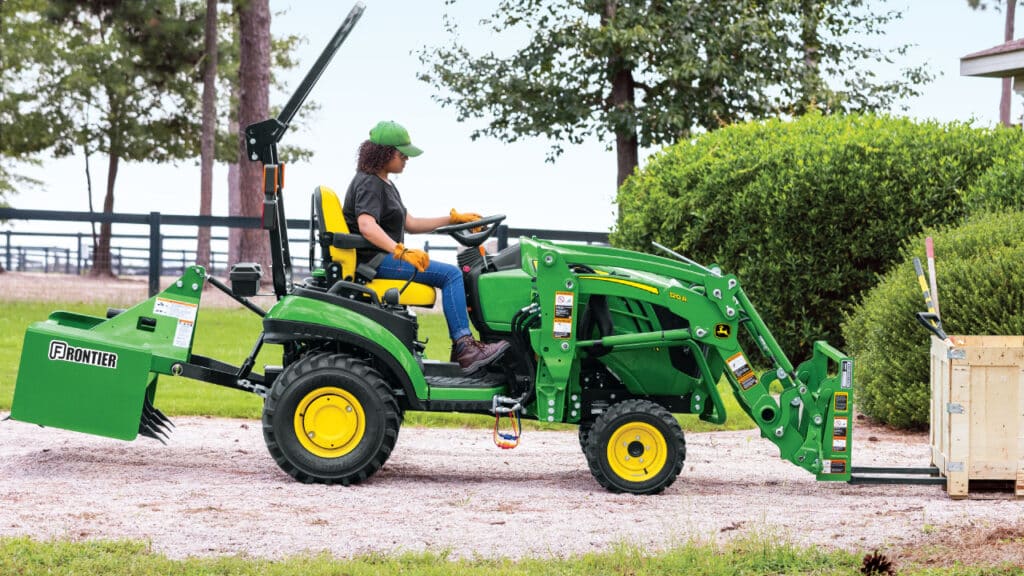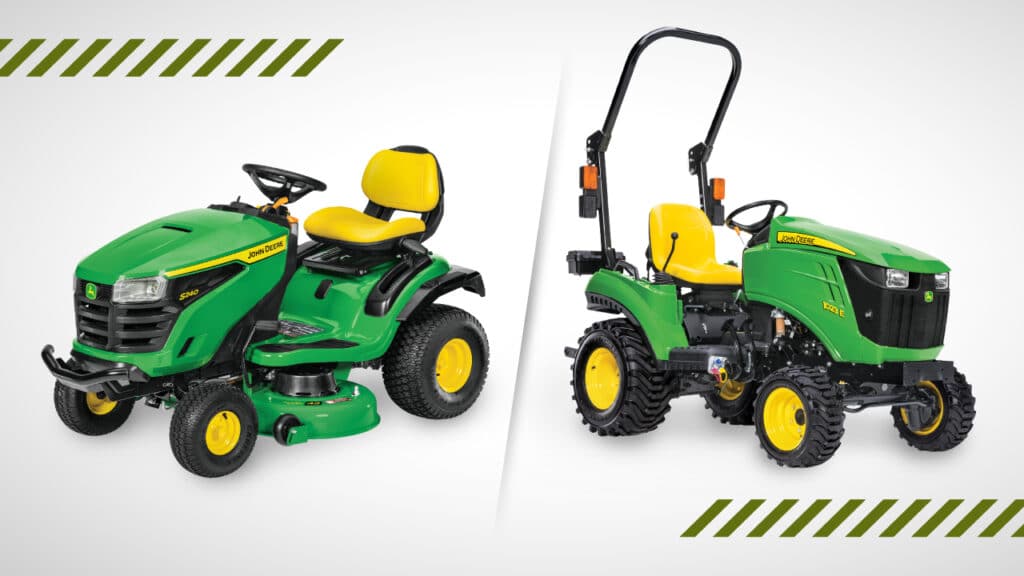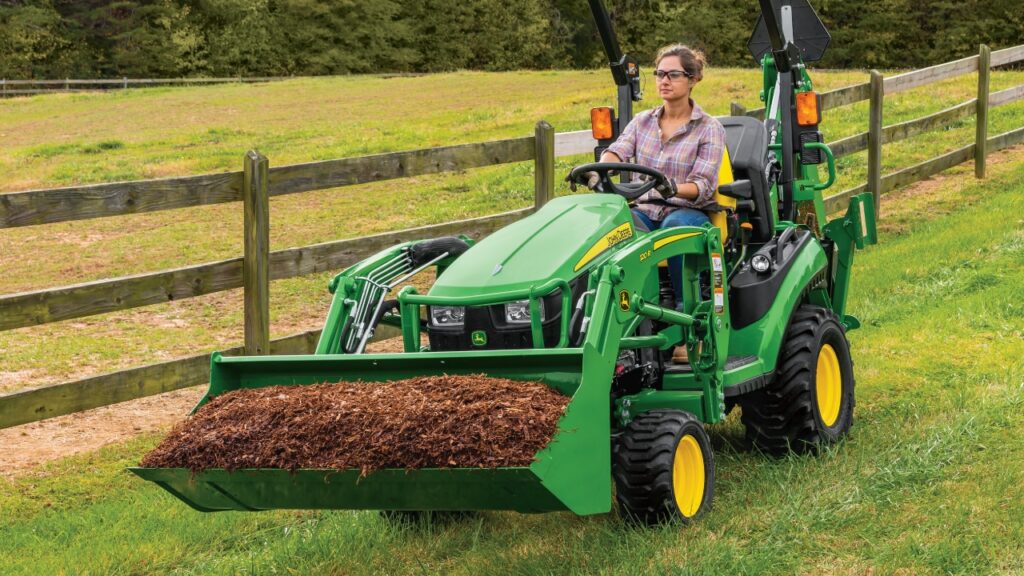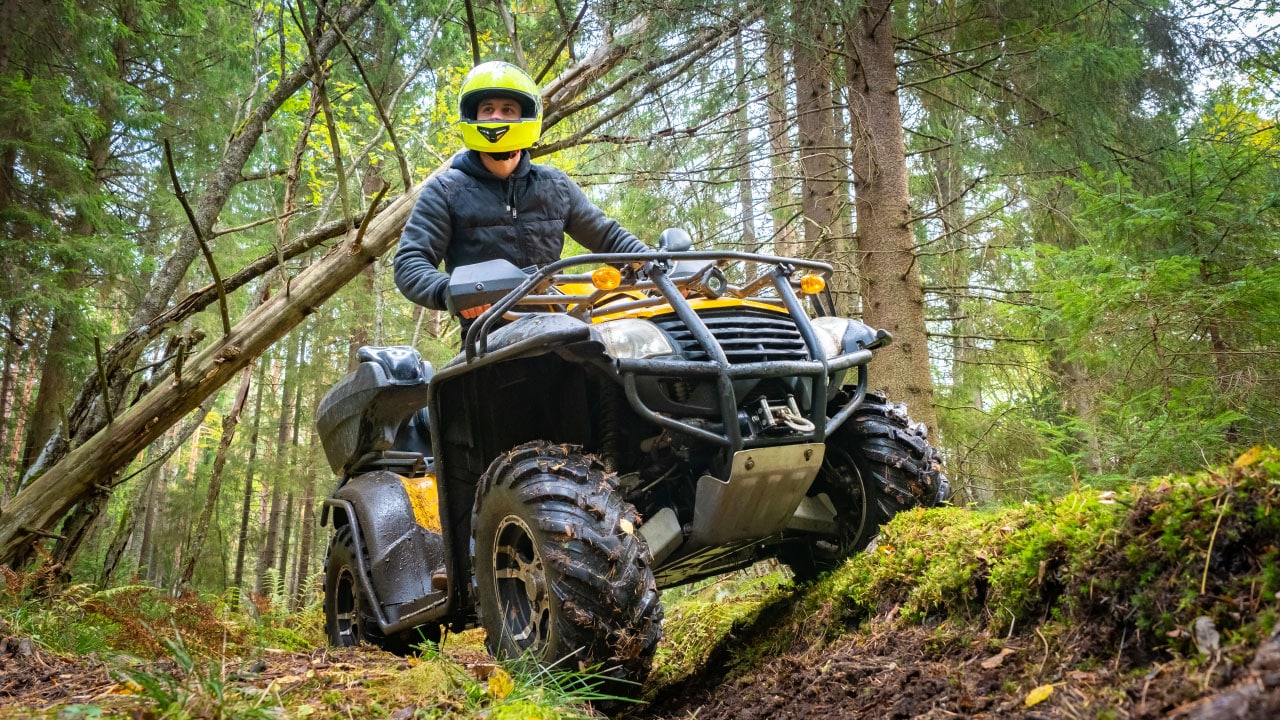
All-terrain vehicles and utility vehicles are popular modes of off-road transportation for outdoor chores and recreation. Deciding which one is right for you requires understanding the differences between these machines, then matching them to your personal preferences and the types of work and recreation on your to-do list.
Let’s start with a look at each type of vehicle, then explore their advantages.
What is an ATV?
According to the ATV Safety Institute, an all-terrain vehicle (ATV) is defined as a motorized off-highway vehicle designed to travel on four low-pressure or non-pneumatic tires, having a seat designed to be straddled by the operator and handlebars for steering control.
ATVs are divided into two types as designated by the manufacturer. Type I ATVs are intended for use by a single operator and no passenger. Type II ATVs are intended for use by an operator and a passenger and are equipped with a designated seating position behind the operator.
Riders must consider the various ATV sizes, as ATVs are not “one size fits all.” The ATV industry recommends all riders operate an ATV intended for their age. Youth-model ATVs are designed for smaller hands and feet, and travel at slower speeds appropriate for the rider’s age.

What is a Utility Vehicle?
Utility vehicles like those in John Deere’s legendary Gator Utility Vehicle lineup offer many advantages in power, comfort, safety and versatility. Utility vehicles are also referred to as utility task vehicles, crossover utility vehicles or side-by-sides, and are known by acronyms including UV, UTV, SxS and XUV. Whatever you call them, these machines are built to have fun and get the job done.
Utility vehicles are larger and more powerful than ATVs. They seat passengers side by side and are great for hauling people, equipment or other cargo to destinations that are hard to reach with highway vehicles. Utility vehicles have four to six wheels and are steered with a steering wheel, so they handle more like a car than an ATV.
Mixing Business With Pleasure
ATVs are often relegated to recreational riding, with some usage for relatively light-duty chores. Utility vehicles, however, are equally adept at both business and pleasure. Utility vehicles can haul much larger payloads, carry more people and tow heavier loads. They also offer plenty of horsepower, agility, and traction for serious off-roading escapades.
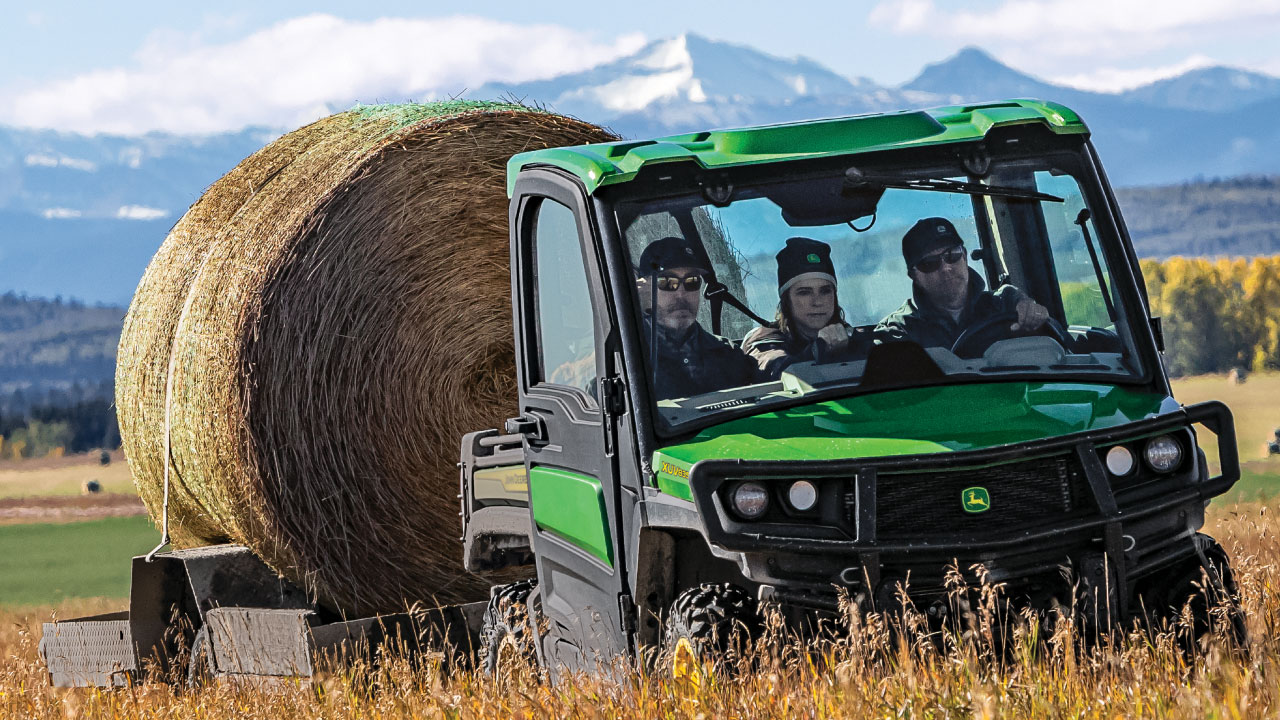
Mass Transportation
ATVs are mostly used for transporting one person on recreational rides. A UTV excels for trail riding but can also carry multiple people (plus gear) to backcountry job sites. For example, if you plan to haul heavy loads and transport a crew of passengers, a full-size John Deere Gator XUV Crossover Utility Vehicle merits serious consideration. John Deere further expands your options with its Mid-Size Crossover Gator Utility Vehicles and Work Series Gator Utility Vehicles.
Safety Considerations
Utility vehicles offer numerous safety benefits over ATVs and can be safely operated in a wide variety of environments. Many utility vehicles come with a cab, roll bar, seat belts and other safety features. For example, John Deere’s Full-Size XUVs feature an Occupant Protective Structure with multiple passenger side handholds and 3-point seat belts that is SEA, ANSI and OSHA certified for rollover protection. John Deere Gators also offer industry-leading suspension, steering and braking systems that ensure a smooth, safe ride while giving the driver optimal control over the vehicle.
Comfort
ATVs can be equipped with windshields and lightweight cab enclosures, but the majority are used without such amenities, leaving the rider exposed to the elements. Utility vehicles more commonly come with cabs. John Deere’s factory-installed cabs—standard on some Gators and optional on others—are designed to keep you comfortable in all types of conditions. They’re tightly sealed to keep harsh weather at bay. Plus, you get a fully opening front windshield, additional storage space, heat and air conditioning. The Gator family also offers a more ergonomic design, more legroom and more comfortable seating (including a backrest) than ATVs. Also, thanks to power steering, Gators are easy to drive for persons of a wide range of ages and physical capabilities.
Accessorizing
ATVs can be outfitted with snow blades, racks and other accessories. But utility vehicles are compatible with a much wider range of add-ons, allowing for far greater versatility and customization to fit your needs. John Deere offers more than 100 attachments for members of its Gator family, including cargo organizers, sprayers, cabs and winches. If you plan to use certain attachments, be sure to choose a Gator that’s compatible with them.
Fuel Options
Gasoline is the standard fuel for ATVs and many utility vehicles. But some utility vehicles, such as John Deere’s XUV865R Signature Edition, are available with liquid-cooled 4-cycle diesel engines. Fans of diesel power and performance will want to check out such options.
As with so many equipment buying decisions, the right choice between an ATV or utility vehicle ultimately depends on your needs and preferences. Minnesota Equipment’s expert sales staff is always happy to discuss the options. Stop by, check out our inventory of John Deere Gators, and get behind the wheel of a few different models to see which one is right for you.
Contributed by Dan Johnson


 MyME
MyME

